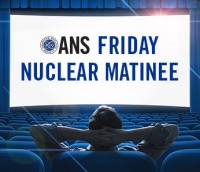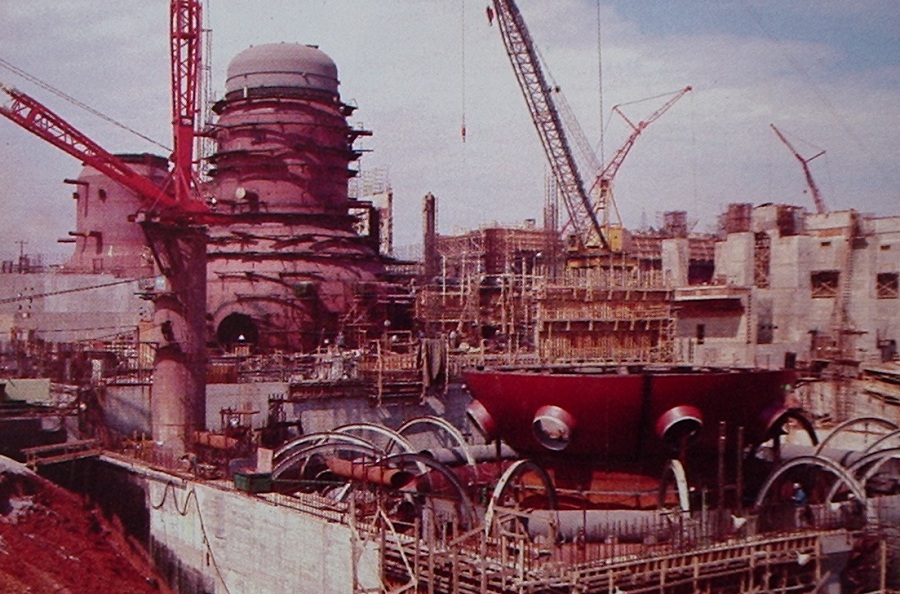Friday Matinee Special: Nuclear Construction Innovation
(Third in a series of videos recorded at the ANS Annual Meeting, June 2017 in San Francisco)
 It's impossible in today's nuclear energy world not to focus attention on the engineering and construction aspects of modern nuclear power plants. The recent work stoppage at, and planned abandonment of, the much-heralded V. C. Summer nuclear plant expansion has thrust into the limelight all aspects of nuclear power plant construction - and, right along with that, all the possible modes and potential pitfalls of methods for financing nuclear plant construction. It's clear that at least so far as the large GW-scale (Gigawatt, or 1000 Megawatt) light water plant variety is concerned, cost and schedule will be foremost in everyone's minds for some time.
It's impossible in today's nuclear energy world not to focus attention on the engineering and construction aspects of modern nuclear power plants. The recent work stoppage at, and planned abandonment of, the much-heralded V. C. Summer nuclear plant expansion has thrust into the limelight all aspects of nuclear power plant construction - and, right along with that, all the possible modes and potential pitfalls of methods for financing nuclear plant construction. It's clear that at least so far as the large GW-scale (Gigawatt, or 1000 Megawatt) light water plant variety is concerned, cost and schedule will be foremost in everyone's minds for some time.
At the 2017 ANS Annual Meeting, Mark Peres, the executive project director for Fluor / NuScale Power, delivered an interesting and informative presentation on various innovations now occurring in the field of nuclear plant design and construction. Peres was well-suited for this presentation. The NuScale nuclear plant overall design is more and more widely becoming considered as a benchmark for containing and constraining design complexity, as well as the base cost of the plant and project cost (given the simplicity of the design and intended ease of construction).

Browns Ferry Nuclear Plant under construction; photo from TVA brochure in Will Davis library. • The construction of large nuclear power plants like Browns Ferry in the 1960's - 1980's required many thousands of workers on site, in addition to hundreds of engineers and management staff, not to mention tens of thousands of pages of specifications and drawings. Making these all work together to ensure that the proper flow of parts, papers and people was an art - an art which was continually improved during that time as a continuous feedback loop between designers and builders was available. The 30 year break in nuclear construction also interrupted that very helpful feedback loop; further, the time span has seen the mass retirement of most people who were directly involved with designing and constructing the nuclear plants running today.
In his presentation, Peres outlined the fact that modern-day information management ought to be able to, if properly employed, streamline the delivery of materials at a work site (which for a GW scale plant is an enormous and very complicated multi-acre area) and efficiently direct labor. He also detailed computer modeling, which nowadays is considered essential prior to launching any large infrastructure projects' construction.
Quite properly, Peres also included somewhat of a warning about deployment of new construction methodology and technology as he pointed out that new things take considerable time to wind their way through codes and standards, as well as regulatory approval.

Dresden Nuclear Generating Station under construction; illustration from Commonwealth Edison brochure, Will Davis collection. • The enormity of a nuclear plant construction project can be hinted at by the sheer scale visible in this photo of an early commercial plant being built. As time went on, the teams who constructed the first commercial plants completed those tasks and moved to the next nuclear plant - frequently assuring that the next project would be run well. However, as the flood gate of nuclear plant orders opened up in the 1970's it became necessary for architect-engineer and constructor firms to hire many more people, and since the demand was so high many had no prior nuclear plant experience. After that, a number of projects suffered from (among many other things) the inexperience of the teams designing and building the plants. Today's world of design has attempted - with mixed results - to 'engineer out' as many problems as possible, but the multi-decade gap in nuclear plant builds and the breaking of the experience-based feedback loop between construction and next-to-be-designed plants has led to considerable problems and delays in parts of the world. In other parts, where nuclear plant construction has continued for many years without a stop the modern schedule and cost-keeping is far better.
As Peres points out, new design and construction technologies may or may not fit any particular project's timeline, and it must be considered that dependence on any particular technological advancement might actually result in delay of the project. Watch this interesting video.


